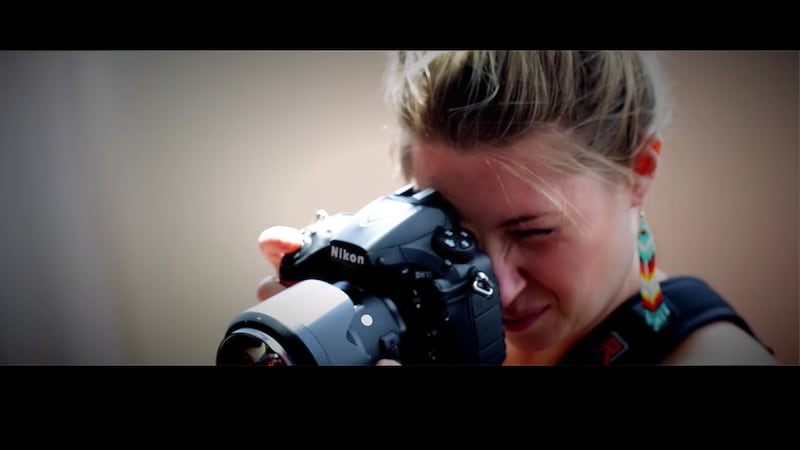In front of Pushdot Studio's large, Southeast Division Street-facing windows, Arkady Brown opens a portfolio almost a year in the making: four glossy pages, each covered in a grid of close-up shots of 48 different vulvas.
It's the first time Brown has seen the art, and she's practically giddy. "They're very powerful all side by side," Brown says. "You still see the vast colors of the vulva and variety of shapes.
"That's mine," she adds as she enthusiastically points to a vulva on the fourth page. "I'm very proud of it."
Brown, who works as a boudoir photographer, began taking the photos for the Vulva Art Project almost a year ago after posting an open call for models on her Facebook page. Since then, she's been struggling to find an art space willing to display her work, not to mention a printer willing to print it. "The labs that I normally use for boudoir, they equate this with pornography," says Brown.
It's a familiar paradox: Nudity is permissible as long as it's sexualized, but if an image depicts sex organs instead of sex, it becomes a problem. Ultimately, Brown brought some sponsors on board and booked the Ace Hotel.
The photos are cropped so that no legs or stomachs are visible, only fleshy vulvas removed from any kind of context. Still, Brown's work appears more reverent than clinical. She made a point of shooting the photographs in soft but defining natural light. Each vulva is distinct enough that Brown says she can recognize each one. "In some of these photos, you only see the outer labia," she adds. "Sometimes, when you sit all day, your labia stick together, they don't open to the world. So I had to ask myself, 'Should I have them manually open their body to me?' No, that's exactly the antithesis of this project."
The only cosmetic edit Brown allowed herself to make was to remove any clinging scraps of toilet paper, since the women will each get a copy of their photo. "This photo right here, if you look closely, that's actually a bubble of discharge," says Brown, pointing to a slick, dark dot between the folds of one woman's labia. Still, Brown acknowledges there are ways in which the project lacks diversity. "I'm very aware that there's a lot of white women in the show," she says.
That, and there are no trans women. A week before the project reveal, the latter fact prompted a backlash on social media. The controversy somewhat outgrew its small group of crusaders, led by a cis woman who is a student at Portland State. Regardless, the dissent led to the loss of a sponsor, and touched on a genuine concern: The type of sexual empowerment Portland art spaces are comfortable with isn't exactly intersectional, and the concept of trickle-down rights is based on a conservative, fallacious logic.
After viewing the vulva photographs for the first time, Brown sits at a cafe next door to Pushdot with two of the participants, Jana Hodgins and Amy Hall. For both women, their decision to participate in the Vulva Art Project was deeply personal.
"I was sexually molested as a child, and that led me into this abusive relationship when I was an adult," says Hodgins, who is 25. "I think a lot of women in this group have experienced losing control, and this is their form of control."
Hall, 56, says that her experience was similar. "I was sexually assaulted by a clergy person, and recovering from that is a lifelong journey. I've had PTSD from the memories, back in the last two years," she says. "If you don't speak out, it's going to continue."
Brown say she hopes to expand the Vulva Art Project and potentially do a series entirely dedicated to trans women. "I don't know where this is going," she says, "but I'm open to conversations."
SEE IT: The Vulva Art Project is at the Ace Hotel, 403 SW 10th Ave., thevulvaartproject.com. 6:30 pm Saturday, Feb. 24. Sold out.
